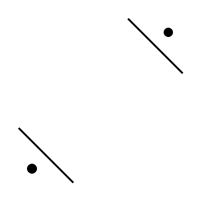The signals used in the field, are almost always those made with flags and the regulation signal equipment. Discs and Hand Signals, although not visible at great distances, may be used whenever the occasion requires it.
The apparatus for the greatest distances is rarely used (i.e. six-foot flag). The four-foot flags are for use in ordinary working, and should be hibitually used with the twelve-foot staff. Myer endeavored to make the use of the four-foot flag compulsory. The temptation was great on the part of the flagmen to substitute for it the two-foot action-flag, and thus render the transmission of messages diffucult and uncertain.
Click Here to View Standard Union Signal Kit
To select a signal station, choose a point perfectly in view of the communicating station; fix the exact position in which the flagman is to stand; so arrainged, if possible, that he will have behind him, when viewed from the communicating station, a background of the same color for every position in which the signals may be shown.
It is an absolute, in order to receive and send signals, with the upmost accuracy, to position the flagman in such a manor, that the signals be fully and completly visable to the communicating station.
The sending of signals, therefore; must be made with the flag motions in a perpandicular view, directly facing the communicating station ~ (As Illistrated Below)
 |
The position of a flagman, transmitting a message, must be exactly facing the point to which the message is being sent; and this must be the case, whatever the style or character of the signal he is using. Signals, of whatever description, made by the flag man, must also be exactly shown on his right and left. In other cases, they will not be clearly displayed to the observer. To determine this exact position, a line, direct to the other station, should be sighted, as over a straight rod for instance, and a line following this direction should be marked on the ground in front of the signal man. A line drawn at right angles with this line should extend on each side of the signal-man. If the common signal equipment is to be used, a marking stake should be drawn on the line in front of the flagman, and twelve feet distant from him; and a similar marker should be placed at the same distance on the side lines on either side.
All signals must be made with reference to the directions indicated by these stakes. These lines must be established by daylight, if possible. The use of the markers, secure the most perfect display of the signals by day, and is even more manifestly valuable at night, when the communicating station becomes invisible. The flagman has three other guides, by which to determine the proper direction in which his signals must be shown.
A signal-man, transmitting messages, should always be placed a little in advance of the person at the glass, in order that errors made in forming any signal may be noticed and corrected.
When signals are made with torches and the ordinary apparatus, at night, the signal-man must stand immediately behind the foot-light, a relates to the other station, and the flying-light be so handled that when brought to the front and lowered to the ground, as to make pause-signals. Its flame, observed from the communicating station, will seem to mingle with the foot-light. When large, common fires are burning at or near the station at night, care must be taken that they are so placed as not to confound the view of the torch-signals, or other lights that may be shown. The signal-man must be placed well to one side of the fire, and his signals must be displayed out of the line of sight from the fire to the communicating station.
The light of large fires, burning near, will often interfere, at night, with the use of the glass. The best location for the glass is, in these circumstances, in advance of the fire. The signalman; making either day or night-signals, ought to be placed a little in advance of, and to one side of the officer at the glass in charge of the station.
Care must be taken to so place the signal-man that the glare of the torches or lights will not interfere with the use of the telescope.
